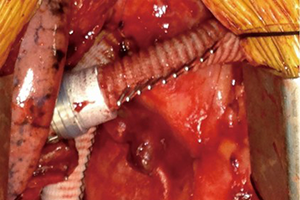Contemporary outcomes of continuous-flow biventricular assist devices
Abstract
Background: Significant right ventricular failure (RVF) complicating left ventricular assist device (LVAD) placement has been reported at 10–30%. Although primarily indicated for left ventricular failure, ventricular assist devices (VADs) have become utilized in a biventricular setup to combat right ventricular failure (RVF) following LVAD implantation. With the advent of continuous-flow LVADs (CF-LVADs) superseding their pulsatile predecessors, the shift towards CF-biventricular assist devices (CF-BiVADs) come with the prospect of improved outcomes over previous pulsatile BiVADs. We aim to review the literature and determine the outcomes of CF-BiVAD recipients.
Methods: A systematic review was performed to determine the outcomes of CF-BiVADs. Pre-operative demographics and device configuration data was collected. Primary outcomes evaluated were short-term survival, long-term survival, duration of support, and survival to transplant. Secondary outcomes evaluated included intensive care unit (ICU) and hospital length of stay (ICU-LOS and HLOS, respectively), pump thrombosis, pump exchange. Median and interquartile range was reported where appropriate. A major limitation was the likely overlap of cohorts across publications, which may have contributed to some selection bias.
Results: Of 1,282 screened, 12 publications were evaluated. Sample size ranged from 4 to 93 CF-BiVAD recipients, and follow-up ranged from 6 to 24 months. Mean age ranged from 34 to 52 years old. Forty-five percent of CF-BiVADs had right atrial (RA-) inflow cannulation, with the remaining being right ventricular (RV). Thirty-day survival was a median of 90% (IQR 82–97.8%) and 12-month survival was a median of 58.5% (IQR 47.5–62%). Where reported, rate of pump thrombosis (predominantly the right VAD) was a median of 31% (IQR 14–36%), although pump exchange was only 9% (IQR 1.5–12.5%).
Conclusions: RVF post-LVAD implantation is a high morbidity and mortality complication. There is no on-label continuous-flow RVAD currently available. Thus, the modifications of LVADs for right ventricular support to combat pump thrombosis has resulted in various techniques. BiVAD recipients are predominantly transplant candidates, and complications of pump thrombosis and driveline infection whilst on wait-list are of great consequence. This study demonstrates the need for an on-label CF-BiVAD.
Cover






